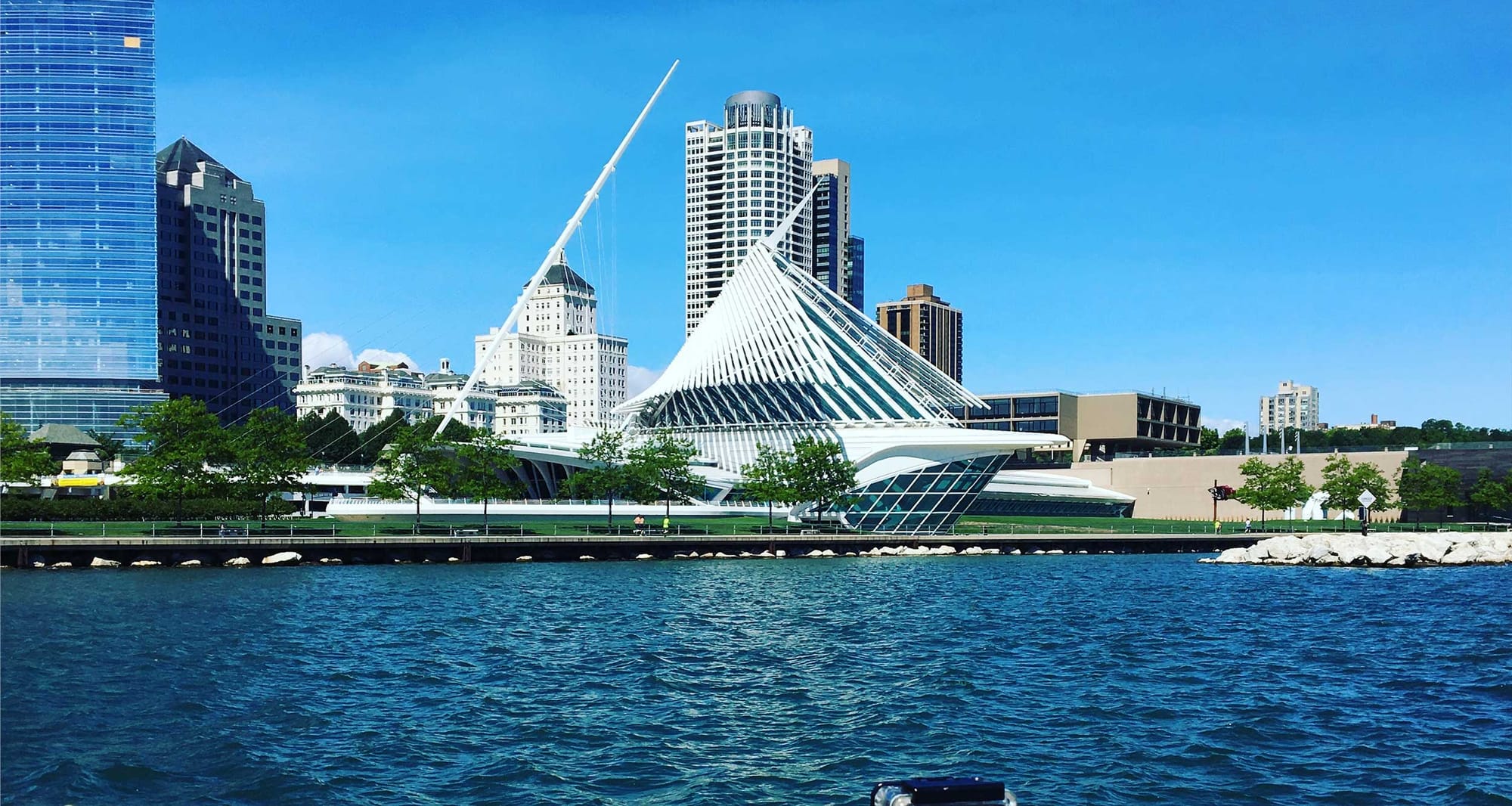
Milwaukee may be a “small” city, but it has a lot to offer in the way of tourist attractions. The nation’s “Beer City” is brimming with great brewery tours, but there are also opportunities to get out on the water, see great works of art, listen to music and more. I was able to check out many of these attractions during my weeklong tour of Milwaukee, and I am pleased to report on their wheelchair accessibility here.
Milwaukee Art Museum
As you approach the Milwaukee Art Museum, you’ll realize that the gallery’s central structure is a piece of art in and of itself. The Quadracci Pavilion, designed by Santiago Calatrava, is an award-winning, iconic building that dominates the Milwaukee lakefront. The pavilion is topped with a wing-like brise-soleil that extends out and “opens” over the building at noon each day, weather permitting.
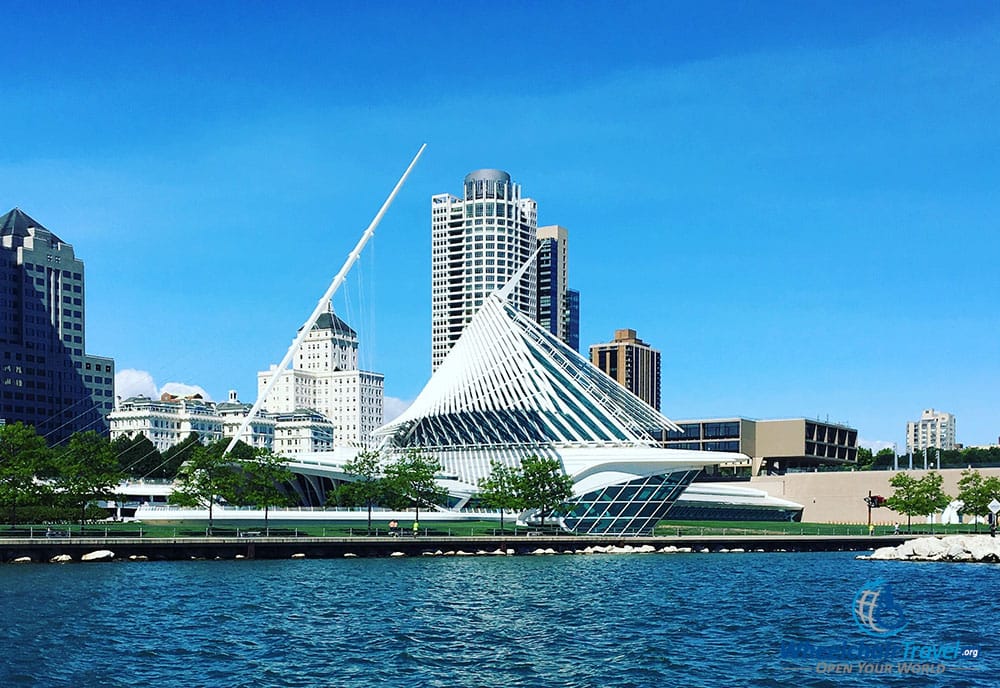
The interior of the Quadracci Pavilion is just as incredible as its exterior, and really put me in the mood to admire the largest collection of art in Wisconsin.
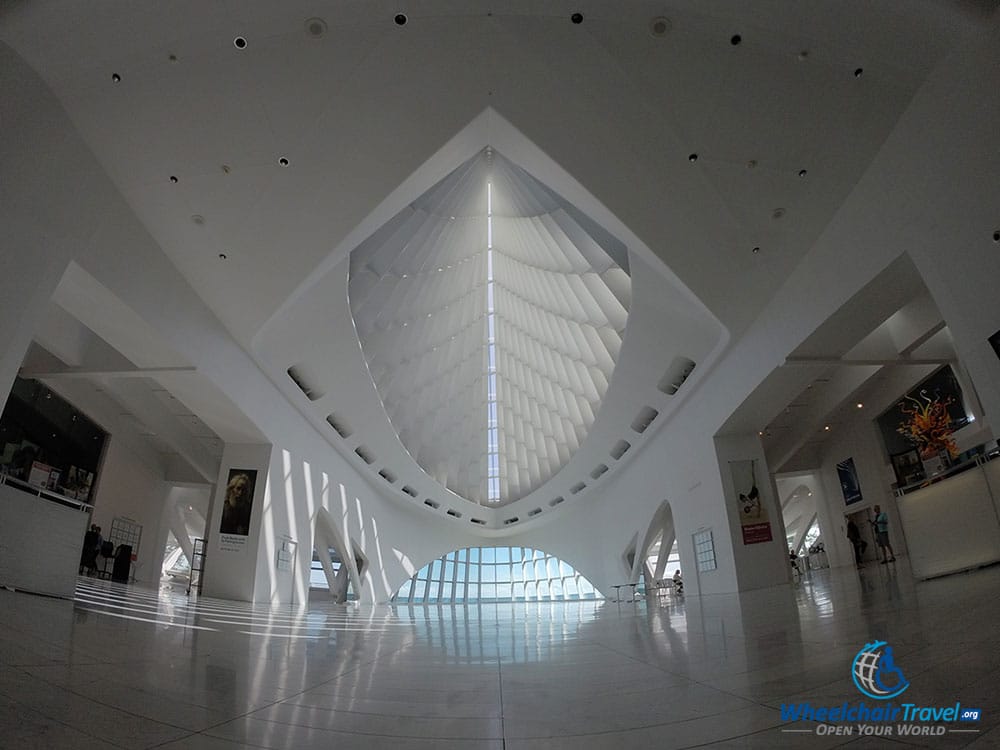
The collection itself is diverse – comprised of paintings, sculptures, prints, decorative arts, photographs, drawings and more from antiquity to the present. I spent a significant amount of time in the European art galleries, which included some fantastic early Netherlandish and German art.
Among the museum’s most revered works are a few selections by Monet, Picasso and Warhol.
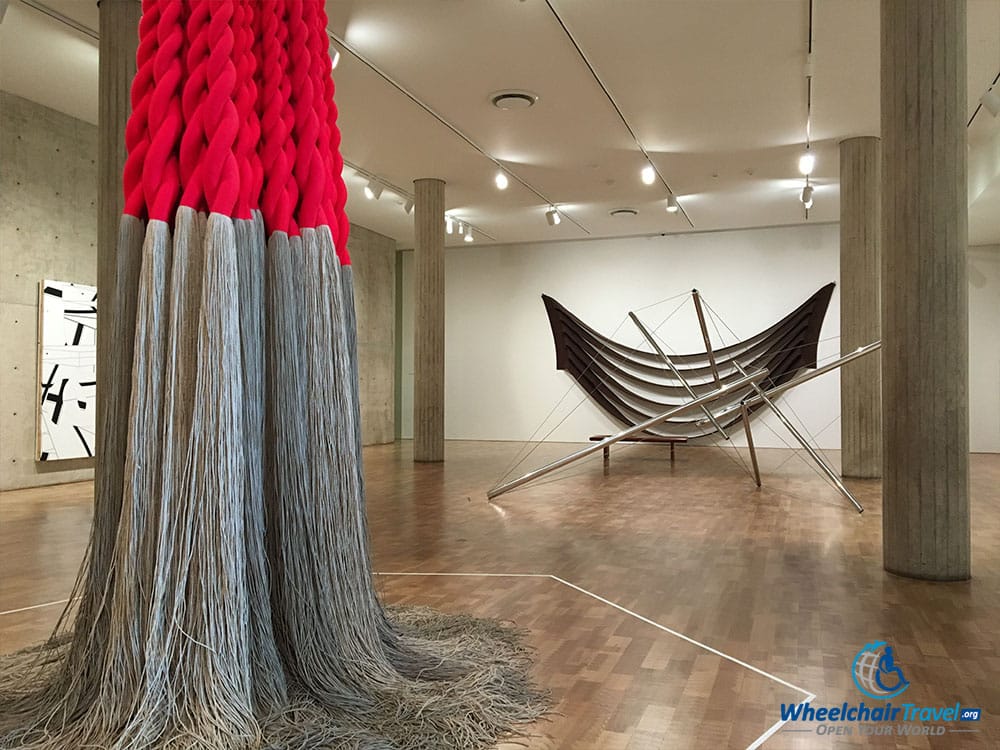
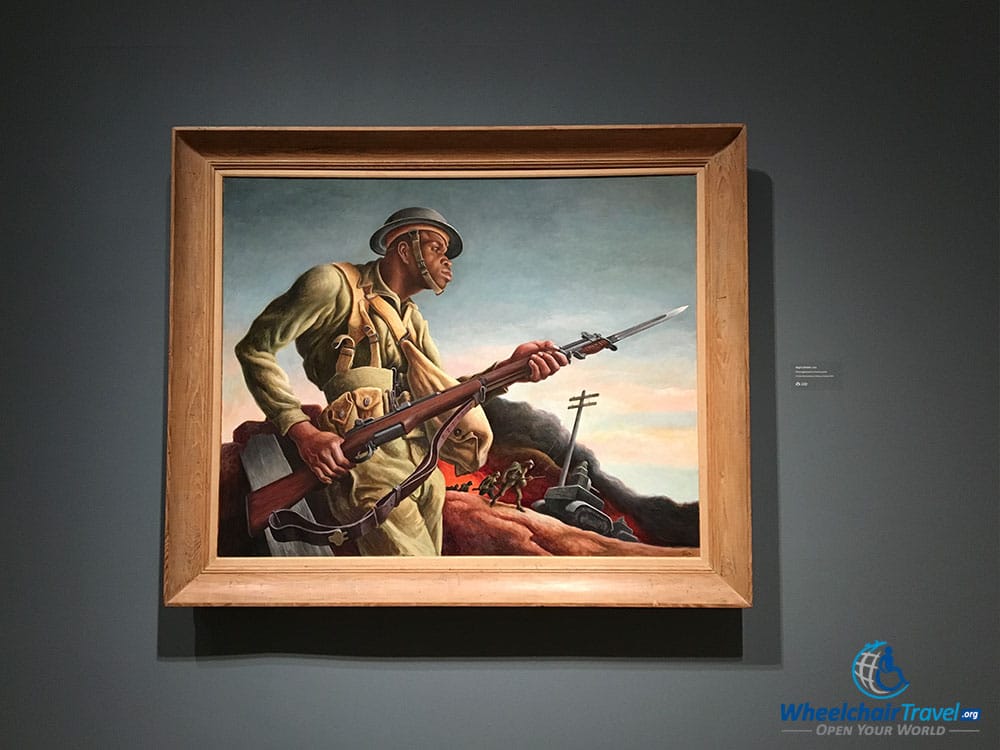
Touring the museum in my wheelchair was a breeze – ramps and elevators were easy to find and in central locations. The staff answered all of my questions, and showed me where to find the pieces I was most interested in. ADA-compliant restrooms, including private bathrooms that could accommodate a personal care assistant, are available.
If you’re looking for a quick snack or bite to eat, be sure to check out the cafe on the ground floor – which provides excellent views of the waterfront. From there, you’ll also be able to access the wheelchair accessible pathways along the lake. For more information, visit the museum’s website at www.mam.org.
Harley-Davidson Museum
I’m not a motorcycle enthusiast. As a child, I rode a dirt bike a few times, but never came close to a Harley. Now, as a wheelchair user, I doubt I’ll ever ride one. But the Harley-Davidson Museum drew me in as a lover of history.
Harley-Davidson is the world’s leading manufacturer of motorcycles. The company generates more than $5 billion in annual revenue and employs nearly 6,000 people. But its beginnings were much more humble.
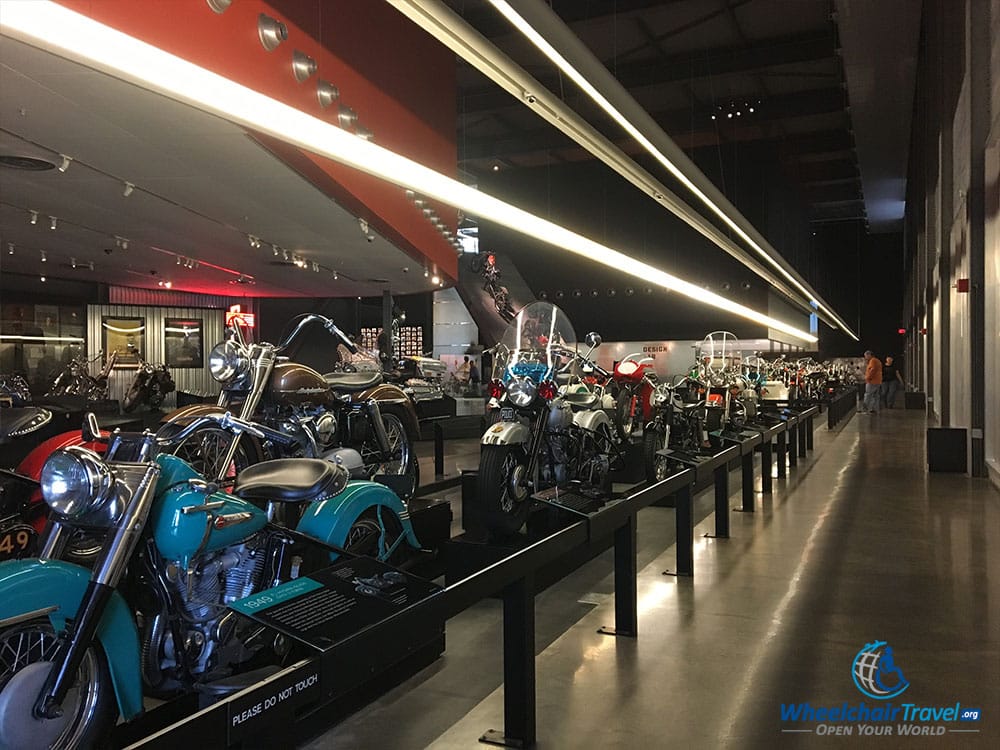
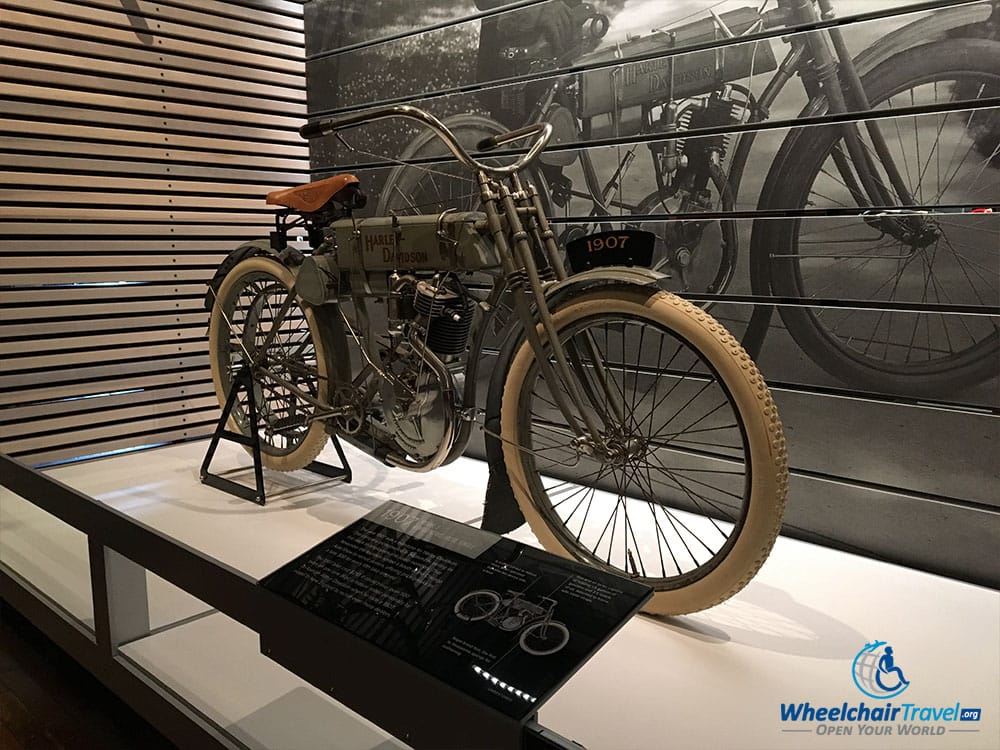
Founded in 1903, the company is now 113 years old. And it began with a couple of college-aged guys, William S. Harley and Arthur Davidson, outfitting a pedal bicycle with a motor. That first bike couldn’t climb many of the hills in Milwaukee, but they kept at it.
The museum traces the history and development of the company and the vision of its founders – from the first bike “Serial Number One” to the latest designs and innovations. As you make your way through the museum, you’ll notice the incredible journey that the company took in creating and innovating over the last century. I left with an understanding of how two guys managed to create a business brand that is adored by millions.
Admission is available to adults for $20, but you can purchase an annual pass for just $29. A discounted rate of $14 is available to seniors (age 65+), active and retired U.S. military and students. If you are a member of the Harley-Davidson Owners Group (H.O.G.), admission is free. To learn more about the permanent and rotating exhibits on display, visit the museum website.
Lakefront Brewery Tour
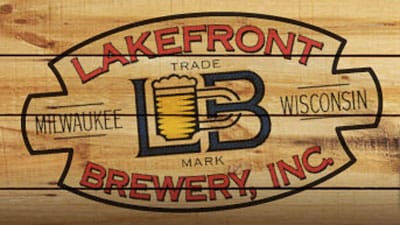
Lakefront Brewery was founded in Milwaukee in 1987 by two brothers who were proficient in home-brewing. TripAdvisor rated the Lakefront Brewery tour among the top 4 in America and it is surely a tour you will not want to miss.
Unlike most brewery tours, Lakefront distributes beer at the beginning of the tour. I’ve always thought it is a bummer that you have to wait an hour to get a drink on a beer tour! Although the tour is less formal than those offered by mega breweries like Budweiser and MillerCoors, I was still able to learn a lot about the history and vision of the company. We were of course also guided through the brewing process from start to finish. The tour was wheelchair accessible. And don’t worry, there is more beer provided at the end!
An interesting fact I picked up was that every beer produced by Lakefront Brewery is designated as kosher. This has allowed the company to pick up some market share in Israel. You can get the most popular brews – IPA, Oktoberfest, Riverwest Stein and others – in 37 states around the country. Lakefront also exports beer to Canada, Australia and Japan.
My favorite Lakefront beer was Hop Jockey, a double IPA which has a high alcohol content of 8.2%. The beer had multiple layers of taste, from citrus to caramel – an interesting blend. For more information about Lakefront Brewery and its award-winning tour, visit www.lakefrontbrewery.com.
Miller Brewery Tour
On a hot summer day, there are few things more refreshing than a cold brew. You’ll get to enjoy a few of those “on the house” at the conclusion of a guided tour of Miller Valley – the historic home of the Miller Brewing Company (now MillerCoors).

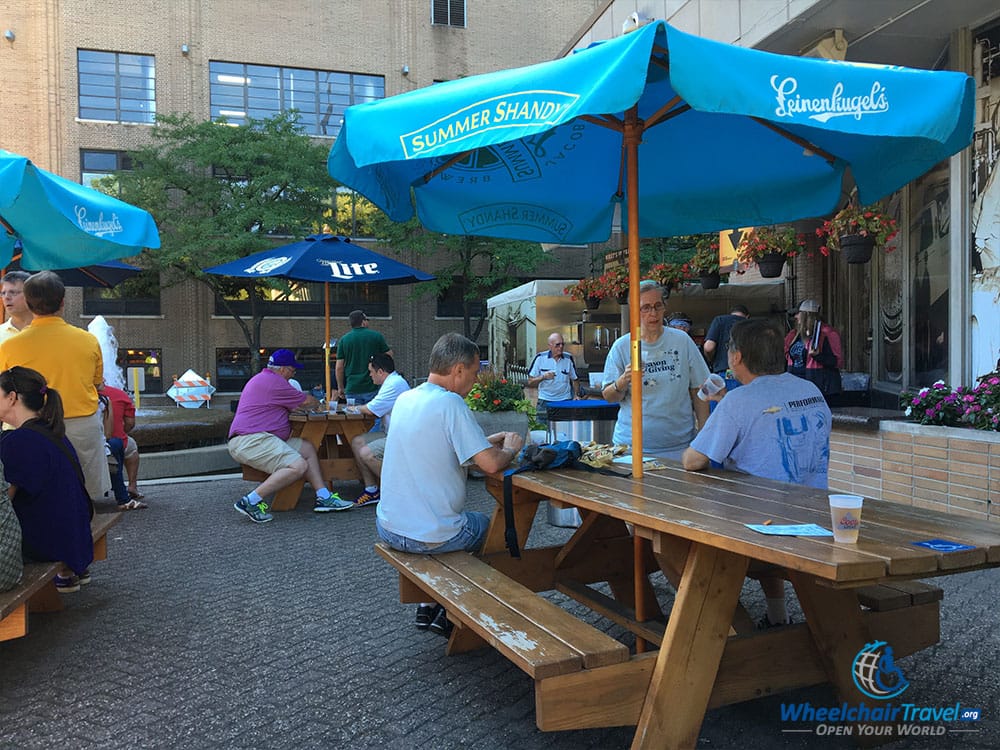
Frederick Miller began brewing beer in Milwaukee more than 155 years ago, using a strain of yeast he brought from Germany. The tour of his brewery – which has grown in size since the 1800s – begins with a short video that provides historical perspective for the tour.
Wheelchair users take an abbreviated, but specialized tour apart from the main group. This is because the general tour route requires visitors to ascend/descend more than 50 steps.
I was guided along the accessible route by a dedicated guide, so I had an opportunity to ask every question that came to mind. One thing I wasn’t able to see were the Miller Caves – an underground network of caves were Miller stored his beer before the advent of refrigeration. There is a lift down to the caves, but it is only able to support manual wheelchairs – powered chairs like mine are too heavy. If you can do the tour using a manual wheelchair, I strongly recommend it! For more information, visit www.millercoors.com. If you plan to take the tour with a wheelchair, the brewery asks for at least 24 hours notice to prepare for your arrival.
Milwaukee Boat Line Sightseeing Cruise
Cruise the rivers and harbors around Milwaukee and Lake Michigan aboard the Vista King – a double-decker ship that is accessible to wheelchairs on the bottom floor.
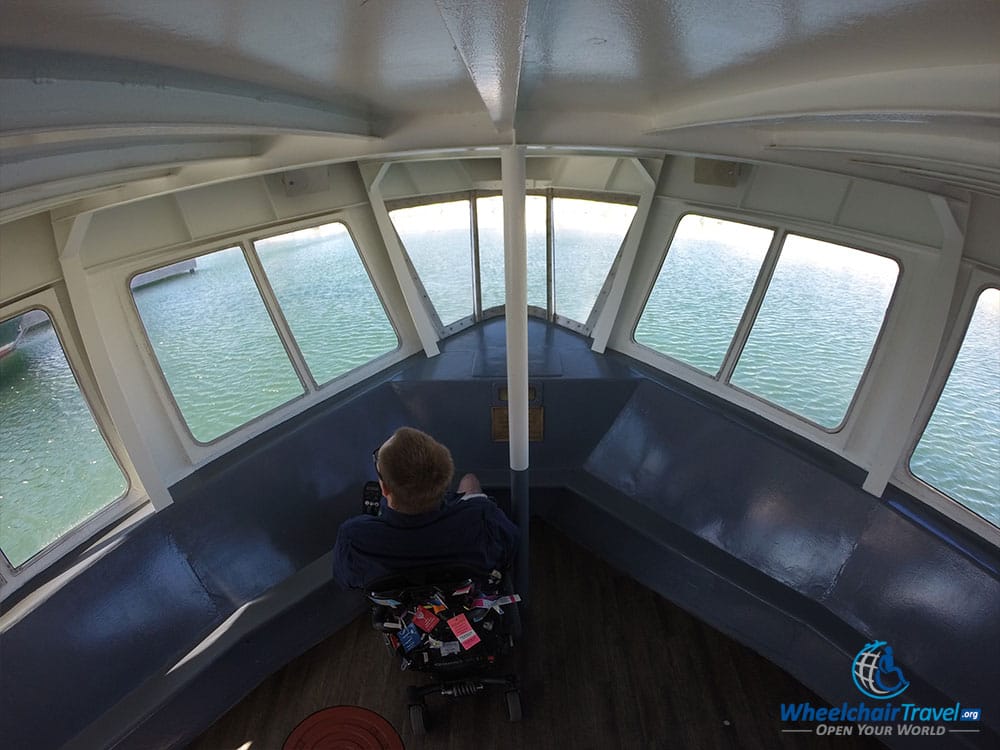
Although the (partially) open-air upper deck is not wheelchair accessible, I had the lower deck all to myself on a 90-minute September afternoon sightseeing cruise. The views were great – especially from the windows that are built-in to the ship’s bow.
Also on the lower deck is a full bar with beer and liquor, non-alcoholic beverages, snacks, hot dogs and brats. You should not leave Milwaukee without having a Bratwurst somewhere!

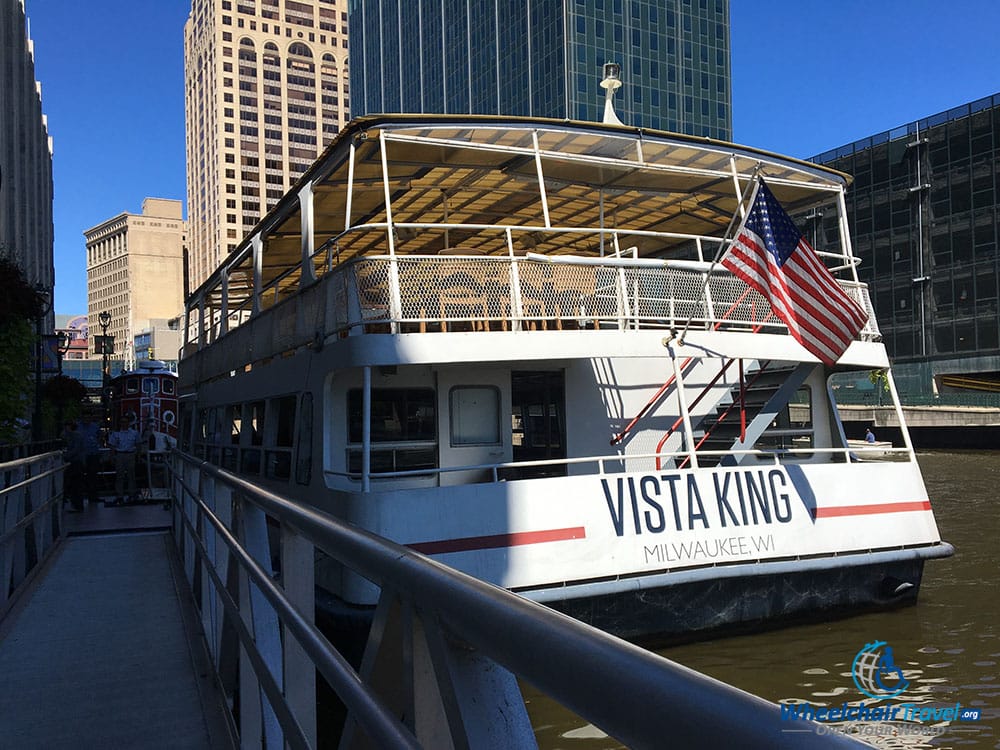
The lower deck is roomy, and it was easy to move around in my wheelchair. Sailing was smooth, even though the waters were a bit choppy with it being a windy day in Milwaukee. Bathrooms are located on the lower deck, but they are not wheelchair accessible – maybe a tad larger than an aircraft lavatory, but nothing more.
Tickets for the 90-minute sightseeing cruise are $17.99 plus tax ($19 total, as of writing). You can book online, but I recommend calling first – Milwaukee Boat Line has three ships, but only the Vista King is wheelchair accessible. For more information, visit their website at www.mkeboat.com.
Milwaukee County Zoo
2,500 animals. 300 species. 200 acres. The Milwaukee County Zoo traces its history to 1892, but has existed in its current location since 1961. A diverse collection of animals and species make up the zoo’s population – from birds in the aviary to the giant African elephants.

My favorite animals were the towering giraffes, and I was able to get a really great view of them. While some animals were easy to see, others – like the Cheetahs on loan from the national zoo – were harder to spot from a distance. Some were just a bit shy – like the Hippopotamus, who spent most of his time out-of-sight and underwater.
The pathways throughout the zoo were wheelchair accessible, and most were relatively flat. Ramps provided access to all of the indoor exhibits and lookout platforms, and most doors were outfitted with electronic doors (activated with the touch of a button). Accessible restrooms are located throughout the zoo.
I had hoped that the Zoofari Express train was wheelchair accessible, but it is not. Perhaps that will be an investment for the future. There was also no access available to the Zoomobile – a 25-minute guided tour of the zoo – on the day that I visited. The carousel, always a fun experience for kids, is ADA accessible.
The price of admission depends on the season. Tickets for adults are $14.25 from April 1 through October 31, and $11.75 at all other times. Discounted admission is available to seniors (age 60+) for $13.25 and $10.25, respectively. For more information, visit www.milwaukeezoo.org.
Pabst Mansion
Captain Frederick Pabst, namesake of the Pabst Brewery, moved to Milwaukee in the 1860s. Between 1890-1893, his Flemish Renaissance Revival mansion was built on what was then Grand Avenue. The mansion, pictured below, now sits amid the Marquette University campus.
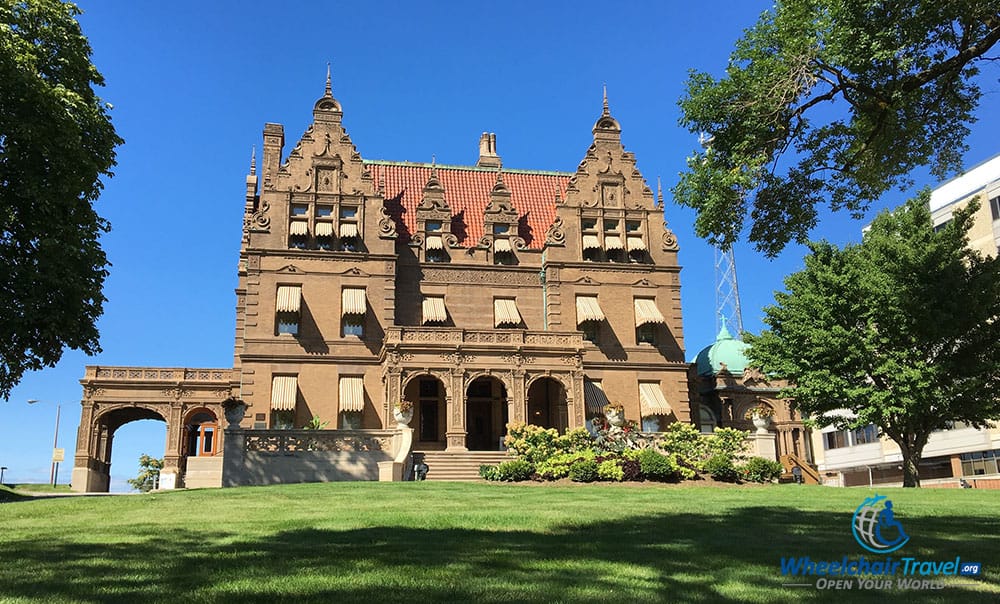
After Pabst’s death in 1904, the mansion was sold to the Catholic Archdiocese of Milwaukee. It was then used as the rectory/residence for 5 archbishops from 1908-1975. Be sure to check out the stained glass windows in the mansion’s gift shop, as they include several of the archbishops’ coats of arms.
Guided tours of the building are offered at the top of each hour and last for 75 minutes. Admission is $12 for adults and $11 for seniors (age 62+). The tour is wheelchair accessible – elevators offer access to the upper levels of the building. To enter the mansion/museum, proceed up the driveway and to the back of the building. Press the buzzer next to the door and let the staff know that you are in a wheelchair.
Photographs of the building interior are not allowed, but I can attest to the accessibility of the tour and the beauty of the rooms and interior. The Pabst Mansion is a treasure of the Gilded Age in the American Midwest. For more information, visit the museum website at www.pabstmansion.com.
Potawatomi Casino
The Potawatomi Hotel & Casino, just a stone’s throw (literally) from Downtown Milwaukee, is one of the country’s largest tribally owned casinos. For the wheelchair traveler, it would be a great place from which to explore the Beer City.
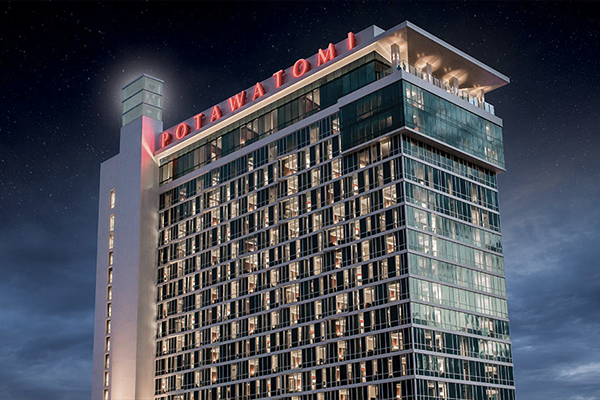
The hotel consists of 381 guest rooms and suites, of which 19 are wheelchair accessible. Accessible rooms with roll-in showers are available. Potawatomi frequently hosts performances by entertainers in its Northern Lights Theater, and there are accessible wheelchair spaces on both the floor and balcony levels.
Food is a high-point of Potawatomi’s offering, and it is home to 7 restaurants. I had the pleasure of dining at the Dream Dance Steakhouse, where I met the chef and had an exceptional cut of beef. The Milwaukee-style Old Fashioned was a great cocktail pairing, recommended by my server.
I saved the best for last – casino gaming. The vast majority of slot machines are wheelchair accessible, with movable chairs. The 1,400-seat bingo hall features accessible tables, and also a non-smoking area that seats 500. I also spotted numerous blackjack and baccarat tables that were at an appropriate height to accommodate me and my wheelchair.
I should also note that the hotel has a wheelchair accessible shuttle, which is used to transport guests around town and to sporting events. For more information, visit the casino’s website.
Summerfest Music Festival – Have You Been?
When I travel, I spend a lot of time talking to locals. This is how I uncover lesser-known attractions, great restaurants and my favorite – dive bars. In Milwaukee, people kept saying that I should come back next year for Summerfest. To find out what that was, I consulted YouTube and found this video from Summerfest 2016:
Truth be told, I’m not a music festival guy. And if you asked me where the largest such event was, I’d have guessed Lollapalooza in Chicago. But I’d have been wrong – because Summerfest in Milwaukee earns the crown. And the line-up is incredible and diverse.
I’m hoping VISIT Milwaukee will invite me back next year for Summerfest, but in the meantime – have you been? If so, please share a thought or two about your own experience in the comments below. If you’ve been to the festival in a wheelchair – your response will be even more valuable.
For more information on Summerfest, check out their website at www.summerfest.com.



